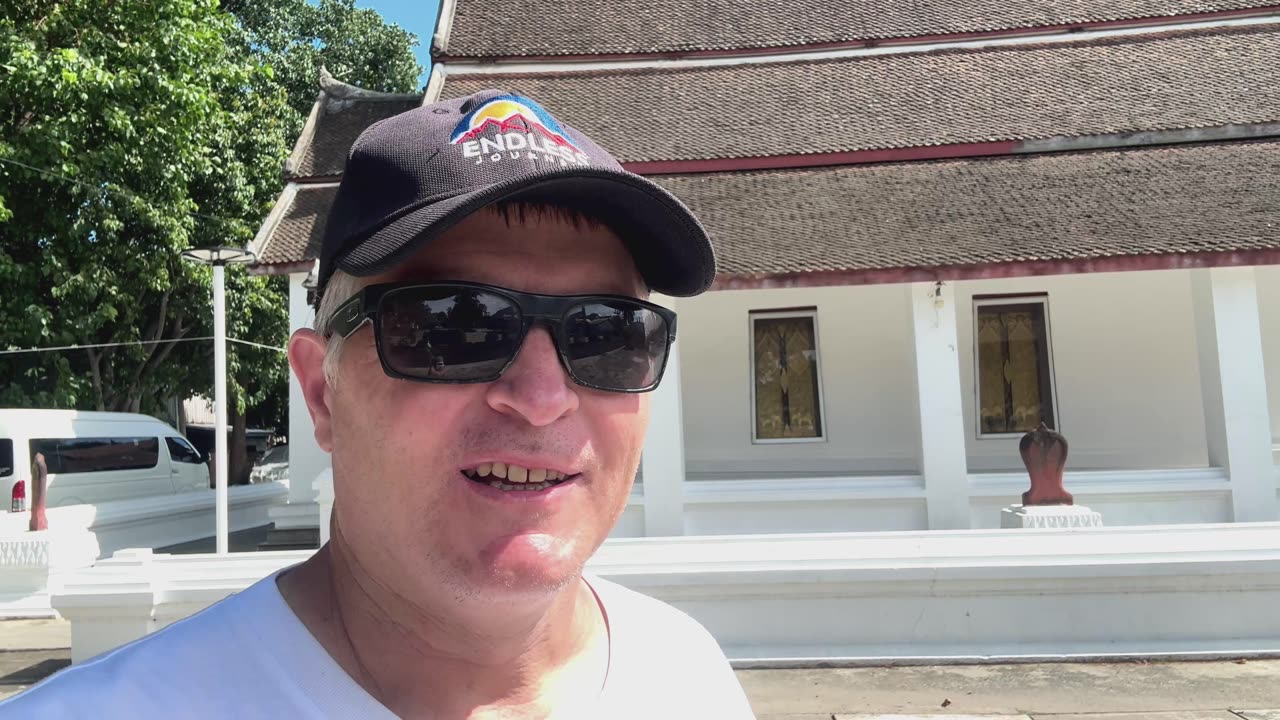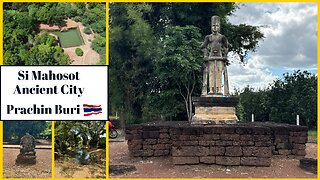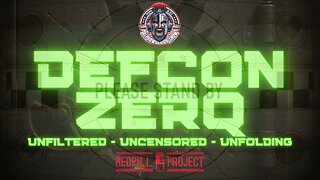Premium Only Content

Prasat Nakhon Luang: Ayutthaya’s Ancient Royal Palace
Prasat Nakhon Luang, often translated as “Royal City Castle,” is a historic ruin and temple complex located in Nakhon Luang District, approximately 20km northeast of the ancient city of Ayutthaya in central Thailand.
Situated on the eastern bank of the Pa Sak River, it served as a royal residence and stopover point during the Ayutthaya Kingdom (14th-18th centuries). The site blends Khmer-influenced architecture with later Thai Buddhist elements, making it a unique example of Siamese royal and religious heritage.
Today, it forms part of Wat Nakhon Luang temple and is a lesser-visited gem among Ayutthaya’s UNESCO-listed ruins, attracting history enthusiasts with its serene lotus ponds and photogenic brick structures.
The structure’s history is tied to the Ayutthaya period, a time when the kingdom exerted influence over Khmer territories. Construction is generally dated to 1631, shortly after King Prasat Thong ascended the throne in 1629, founding a new dynasty after a period of political instability. King Prasat Thong, seeking to legitimize his rule without direct ties to the previous royal family, drew inspiration from Khmer grand monuments in Angkor Thom (the Khmer capital under Ayutthaya’s control at the time). He dispatched artists to Cambodia to study and replicate the designs, resulting in a simplified Khmer-style prasat (a tower-like palace-temple).
Some historical accounts, including those by Prince Damrong Rajanubhab (a prominent Thai scholar), suggest the initial foundations may date to the reign of King Song Tham (1610-1628), possibly linked to the discovery of a revered Buddha’s footprint in Saraburi.
Under Prasat Thong, the building was reinforced with brick and plaster, transforming it from a simple royal camp into a more elaborate residence. The Pa Sak River’s strategic location made it an ideal stopover for kings traveling from Ayutthaya to worship the Buddha’s footprint in Saraburi or to the secondary capital of Lopburi.
The original design featured towering brick structures with Khmer motifs, including lintels and pediments, evoking the grandeur of Angkor Wat—though on a smaller scale. It functioned dually as a palace (prasat meaning both “palace” and “temple” in Khmer) and a temporary camp, reflecting the era’s fusion of royal pomp and religious devotion.
Like much of Ayutthaya’s architecture, Prasat Nakhon Luang fell into disuse and ruin following the Burmese invasion of 1767, which sacked the capital and ended the kingdom. Historical records indicate the construction was never fully completed, possibly due to shifting royal priorities or resource constraints during Prasat Thong’s reign. The site was largely abandoned by the late 18th century, its brick towers crumbling amid overgrown vegetation along the riverbank.
In the early 19th century, during the reign of King Rama I (1782-1809) of the newly established Rattanakosin Kingdom (modern Bangkok era), a local figure known as “Tapakhao Pin” (Mr. Pin in white robes) revived the site. He completed the palace and transformed it into Wat Nakhon Luang, a Buddhist temple. Pin added a Thai-style square hall (mondop) on the ruins’ open porch, enshrining four replicas of the Buddha’s footprint—a nod to the site’s original purpose. This created a rare architectural hybrid: Khmer base with Thai overlays.
The temple complex expanded over time, incorporating elements like a Ganesha shrine (housing a 300-year-old statue) and the “Prachan Loy Sarn” (Floating Moon Pavilion), which displays a moon-shaped stone retrieved from the Pa Sak River.
In 1987, the Fine Arts Department of Thailand registered it as a national ancient monument. Royal patronage continued; in 1994, Princess Maha Chakri Sirindhorn presided over a restoration ceremony, emphasizing its role in preserving Thai-Khmer heritage.
Today, Prasat Nakhon Luang remains an active temple, open daily from 6 AM to 6 PM with free entry. Visitors can climb steep stairs (not wheelchair-accessible) to explore the ruins, pray at the Buddha footprints, and enjoy surrounding lotus ponds. It’s about 1-1.5 hours from Bangkok by car or bus, offering a peaceful contrast to Ayutthaya’s busier sites.
Enjoy the video!
If you would like to support the channel through unique items only found here visit my store
https://youtube.com/channel/UC7Nk0oxkpoyOXvZ-BESD6-g/store
You can also see my videos on Rumble, Bitchute, Odysee and Subscribe Star. If you have any questions or comments and wish to contact me directly I can be reached by email at [email protected]
https://www.bitchute.com/channel/pYUe8EgYcUMc/
https://odysee.com/$/latest/@EndlessJourney
https://rumble.com/c/EndlessJourney
https://www.subscribestar.com/endless-journey
Follow me on Twitter @AEndlessJourney
#endlessjourney
#travel
#thailand
-
 24:06
24:06
Endless Journey
3 days agoLost Dvaravati City: Uncovering Si Mahosot’s 1,000-Year Secrets in Thailand
151 -
 11:22
11:22
Nikko Ortiz
1 day agoExpensive Military Fails
10.3K4 -
 41:10
41:10
The Connect: With Johnny Mitchell
3 days ago $3.71 earnedInside The Sinaloa Cartel's Fight For Survival: How Mexico's Oldest Cartel Is Making It's Last Stand
14.5K10 -
 5:43
5:43
GritsGG
12 hours agoBest Way To Get Specialist EVERY Game!
9.7K1 -
 1:44:47
1:44:47
Side Scrollers Podcast
19 hours agoKimmel RETURNS + Twitch University + More! | Side Scrollers
41K4 -
 13:19
13:19
The Pascal Show
19 hours ago $1.02 earnedCOMEBACK DERAILED! Jimmy Kimmel's Return To Late Night Hit After ABC Affiliates REFUSE To Air Show
8.67K13 -
 LIVE
LIVE
Lofi Girl
2 years agoSynthwave Radio 🌌 - beats to chill/game to
304 watching -
 2:17:05
2:17:05
FreshandFit
6 hours agoFrom SMALLVILLE to AB'SVILLE w/ Sam Jones III
127K7 -
 3:05:45
3:05:45
Price of Reason
13 hours agoTrump's UN Takedown! BACKLASH Over Disney's Jimmy Kimmel Return! Tulsa King Season 3 Premiere Review
133K18 -
 3:03:12
3:03:12
Badlands Media
15 hours agoDEFCON ZERQ Ep. 010: Government Overreach and the Battle for Freedom
177K63